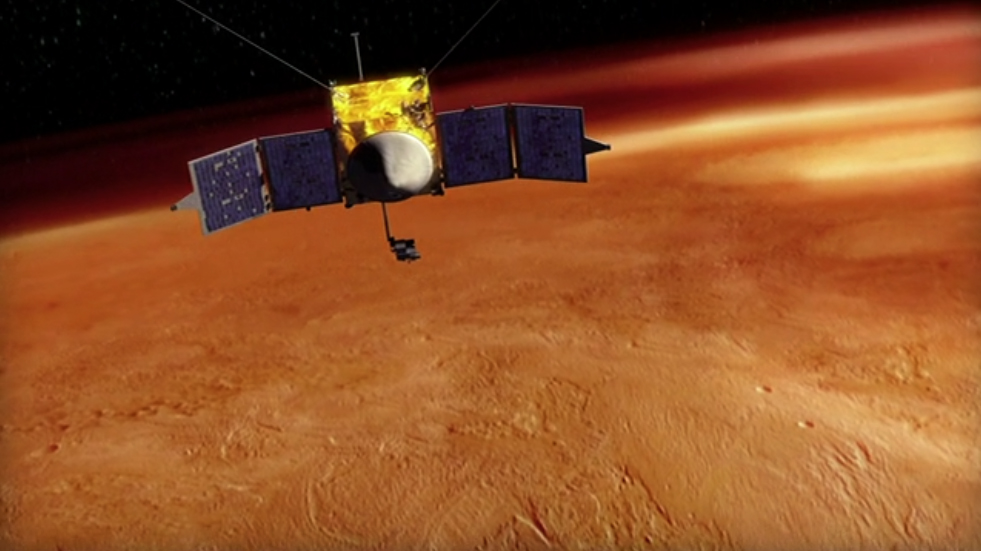
NASA's next Mars probe should get off the ground on time, no matter how long the government shutdown lasts.
The Mars Atmosphere and Volatile Evolution orbiter, or Maven, got back on track for a Nov. 18 launch on Thursday (Oct. 3), just two days after the government shutdown froze liftoff preparations and put a scare into planetary scientists around the world.
"We have already restarted spacecraft processing at Kennedy Space Center, working toward being ready to launch on Nov. 18," Maven principal investigator Bruce Jakosky, of the University of Colorado, Boulder, wrote in a mission status update Thursday. "We will continue to work over the next couple of days to identify any changes in our schedule or plans that are necessary to stay on track." [How the Government Shutdown Will Influence Science and Health]
The shutdown — which went into effect at midnight EDT Tuesday (Oct. 1) when the Senate and House of Representatives failed to agree on an emergency spending bill — forced NASA to furlough 97 percent of its employees and cease most of its operations, including work on missions such as Maven that have yet to leave the ground.
So the $650 million Maven missionwent into a worrisome limbo in the home stretch of its long march toward launch. A lengthy shutdown could have caused Maven to miss its liftoff window, which officially runs through Dec. 7 (though the spacecraft could actually launch as late as Dec. 15 or so, Jakosky said).
That would be a big deal, because the next opportunity for Maven to get off the ground won't come until early 2016, when Earth and Marsare once again properly aligned.
But those concerns have now evaporated. NASA has determined that Maven qualifies for an emergency exception because of its importance as a communications link between Earth and robots on the Red Planet's surface, Jakosky wrote.
Get the Space.com Newsletter
Breaking space news, the latest updates on rocket launches, skywatching events and more!
"Maven is required as a communications relay in order to be assured of continued communications with the Curiosity and Opportunity rovers," he said. "The rovers are presently supported by Mars Odyssey launched in 2001 and Mars Reconnaissance Orbiter launched in 2005. Launching Maven in 2013 protects the existing assets that are at Mars today."
NASA has no Red Planet relay orbiters planned beyond Maven, he added.
Maven was designed to help scientists learn how Mars' thin, carbon-dioxide-dominated atmosphere has changed over time, and what those changes may have meant for the Red Planet's ability to support life.
The probe will arrive in Mars orbit in September 2014. It will then use eight scientific instruments to study the Red Planet's upper atmosphere for one Earth year, which is about half of a Mars year.
Follow Mike Wall on Twitter @michaeldwall and Google+. Follow us @Spacedotcom, Facebook or Google+. Originally published on SPACE.com.
Join our Space Forums to keep talking space on the latest missions, night sky and more! And if you have a news tip, correction or comment, let us know at: community@space.com.

Michael Wall is a Senior Space Writer with Space.com and joined the team in 2010. He primarily covers exoplanets, spaceflight and military space, but has been known to dabble in the space art beat. His book about the search for alien life, "Out There," was published on Nov. 13, 2018. Before becoming a science writer, Michael worked as a herpetologist and wildlife biologist. He has a Ph.D. in evolutionary biology from the University of Sydney, Australia, a bachelor's degree from the University of Arizona, and a graduate certificate in science writing from the University of California, Santa Cruz. To find out what his latest project is, you can follow Michael on Twitter.









